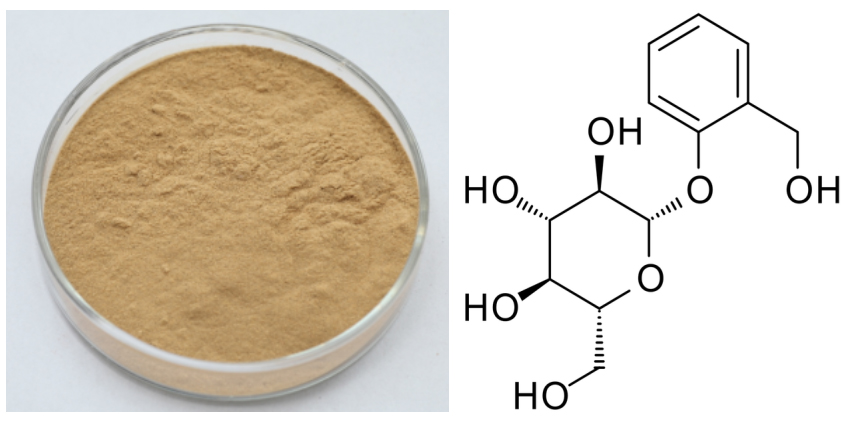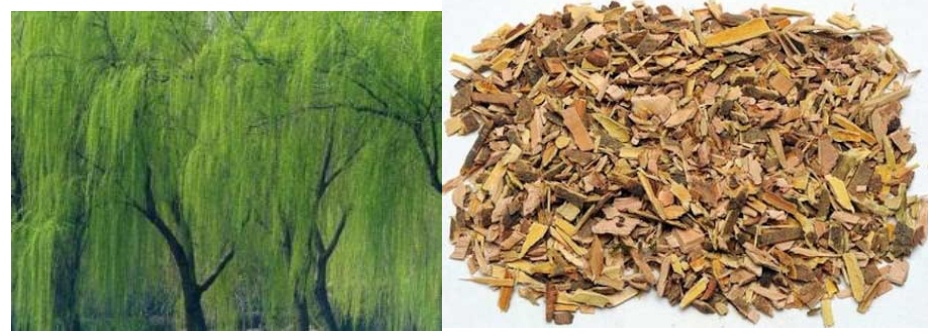Lowest Price for White Willow Bark Extract Factory from Belarus
Lowest Price for White Willow Bark Extract Factory from Belarus Detail:
[Latin Name] Salix alba L.
[Plant Source] from China
[Specifications] Salicin 15-98%
[Appearance] Yellow Brown to White powder
Plant Part Used: Bark
[Particle size] 80 Mesh
[Loss on drying] ≤5.0%
[Heavy Metal] ≤10PPM
[Storage] Store in cool & dry area, keep away from the direct light and heat.
[Shelf life] 24 Months
[Package] Packed in paper-drums and two plastic-bags inside.
[Net weight] 25kgs/drum
Brief Introduction
Salicin is a naturally occurring compound found in the bark of several species of trees, primarily North American in origin, that are from the willow, poplar, and aspen families. White willow, from whose Latin name, Salix alba, the term salicin is derived, is the most well known source of this compound, but it is found in a number of other trees, shrubs, and herbaceous plants as well being synthesized commercially. It is a member of the glucoside family of chemicals and is used as an analgesic and antipyretic. Salicin is used as a precursor for the synthesis of salicylic acid and acetylsalicylic acid, commonly known as aspirin.
A colorless, crystalline solid in its pure form, salicin has the chemical formula C13H18O7. Part of its chemical structure is equivalent to the sugar glucose, meaning it is classified as a glucoside. It is soluble, but not strongly so, in water and alcolhol. Salicin has a bitter taste and is a natural analgesic and antipyretic, or fever reducer. In large quantities, it can be toxic, and overdoses may lead to liver and kidney damage. In its raw form, it may be mildly irritating to skin, respiratory organs, and eyes.
Function
1. Salicin is used to ease pain and reduce inflammation.
2. Relieve acute and chronic pain, including headache, back and neck pain, muscle aches, and menstrual cramps; Control arthritis discomforts.
3. Relieve acute and chronic pain.
4. It has the same effect on the body as aspirin without any of the side effects.
5. It is an anti-inflammatory, a fever reducer, an analgesic, an anti-rheumatic, and an astringent. Specifically, it helps to relieve headaches.
Application
1.Anti-inflammatory, anti-rheumatic,
2.Reduce a fever,
3.Use as an analgesic and astringent,
4.Relieve headache,
5.Ease pain caused by rheumatism, arthritis, and carpal tunnel syndrome.
Product detail pictures:
Related Product Guide:
Our primary target will be to provide our clients a serious and responsible small business relationship, supplying personalized attention to all of them for Lowest Price for White Willow Bark Extract Factory from Belarus , The product will supply to all over the world, such as: Cape Town, Oman, The Swiss, Since the establishment of our company, we've realized the importance of providing good quality goods and the best before-sales and after-sales services. Most problems between global suppliers and clients are due to poor communication. Culturally, suppliers can be reluctant to question points they do not understand. We break down these barriers to ensure you get what you want to the level you expect, when you want it.
Those people try before super lutein, the results is very supreme…
https://www.cureofhighbloodpressure.com –
gnc healthy cholesterol formula reviews – does gnc healthy cholesterol formula work?
GNC Healthy Cholesterol Formula contains clinically studied ingredients, additional key nutrients and a lifestyle program to help manage cholesterol levels and support heart health. This multi-action formula supplies key nutrients that can help block the absorption of cholesterol, promote cellular health, and help support heart health.
This product eatures a powerful blend of black tea extract that is clinically shown to support normal, healthy cholesterol and triglyceride levels and heart health. Phytosterols work by blocking cholesterol absorption from foods and may reduce the risk of heart disease.
GNC Healthy Cholesterol Formula provides trimethylglycine and CoQ10 to help protect cells from oxdative damage. CoQ10 is a powerful cardiovascular antioxidant and an essential component of the heart’s energy producing system.
Looking for a natural treatment to lower high blood pressure that work? We advise you to check out Detorex at https://www.cureofhighbloodpressure.com before you buy treatment for highblood pressure
After the signing of the contract, we received satisfactory goods in a short term, this is a commendable manufacturer.







